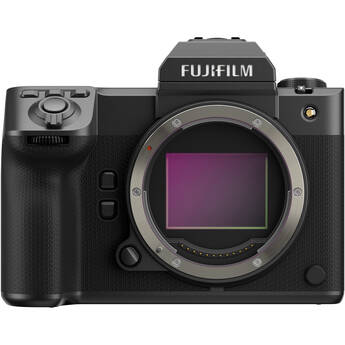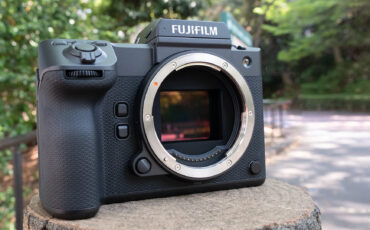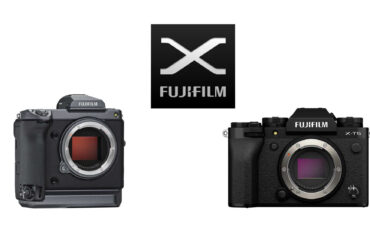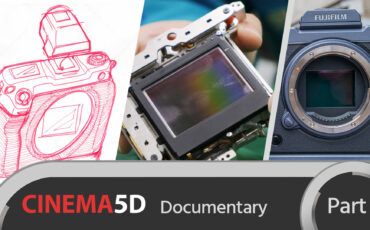FUJIFILM GFX100 II Explained – Interview with Product Planning Team
FUJIFILM introduced the brand new GFX100 II large format camera with the most advanced video modes of any FUJIFILM camera to date. The camera can record ProRes, H.264, and H.265 in up to 8K 30p to CFexpress or SD cards as well as external SSDs. Anamorphic recording modes are available as well as integrated Camera-to-Cloud without the need for external hardware. There’s a lot to talk about so let’s dive in!
In 2019, FUJIFILM introduced the first GFX large format camera with a sensor size between full frame and medium format. Now, FUJIFILM has introduced the direct successor to the original GFX100 with the GFX100 II. We sat down with product planning manager Makoto Oishi-san and product planner Taiji “TJ” Yoneda-san to talk about the GFX line and what makes the GFX100 II special.
In case you missed it, check out our full review of the FUJIFILM GFX100 II and let us know what you think!
GFX100 II sensor and processor
The FUJIFILM GFX100 II has become the new flagship GFX large format camera. The camera features a new sensor that has the same number of pixels as the last model but with improved reading speed. This speed increase not only allows for higher continuous still photo capture but also for 4K and 60p video shooting with minimum rolling shutter and no video crop.
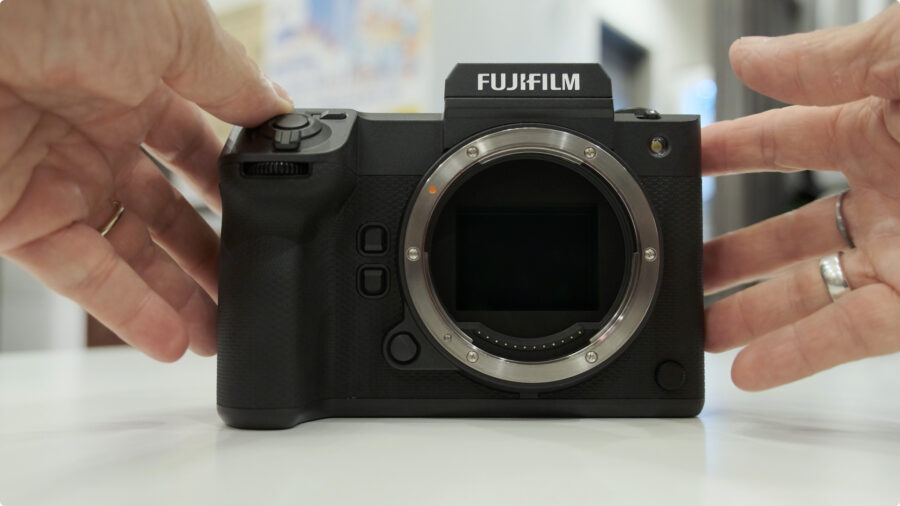
Camera front. Image credit: CineD 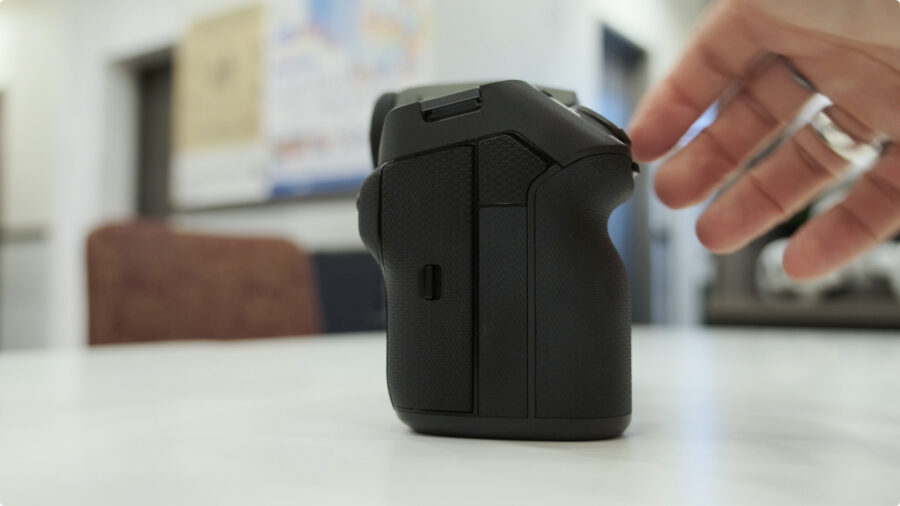
Camera side. Image credit: CineD 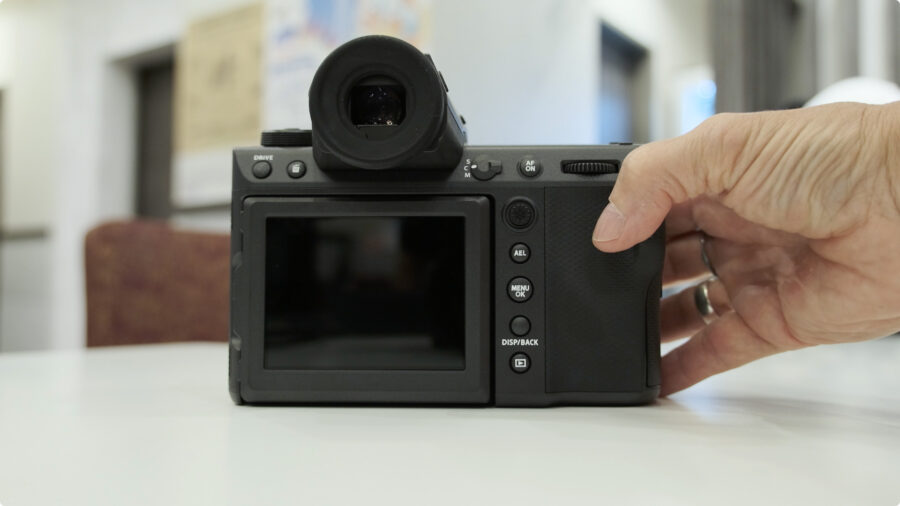
Camera rear. Image credit: CineD 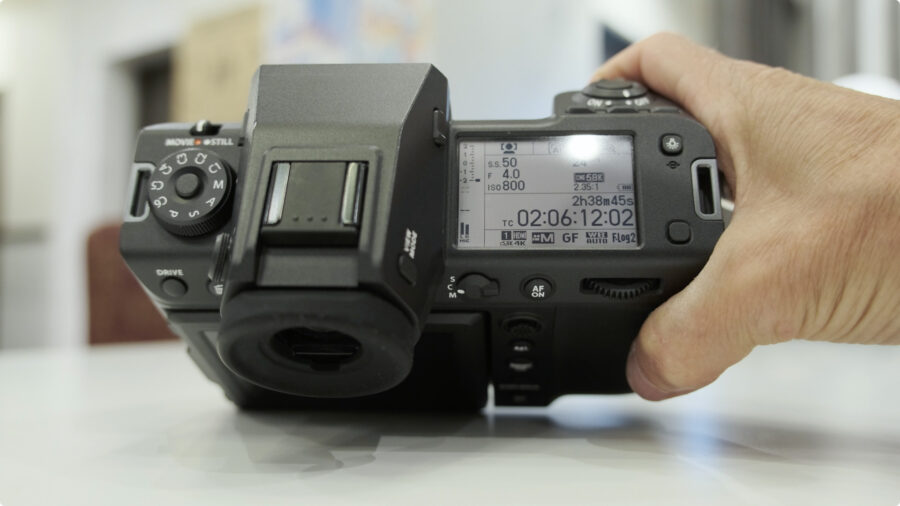
Camera top. Image credit: CineD
Powering the GFX100 II is the same X-Processor 5 that is also used in the FUJIFILM X-H2S, X-T5, and X-S20 cameras.
Video capabilities
Building on the flagship video capabilities of the X-H2S, the GFX100 II can also record up to 8K 30p. The best rolling shutter result should be achieved when filming in 4K 60p, according to Makoto-san. We will, of course, conduct our own lab test to verify this as soon as we get a production model of the camera.
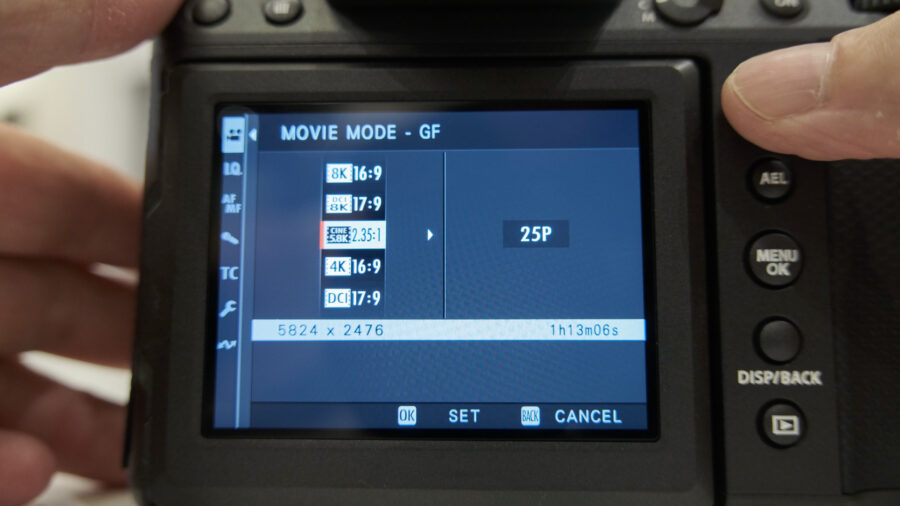
The best field of view can be achieved by recording in 5.8K GF, which uses all horizontal pixels of the sensor. GFX can also record 3:2 aspect ratio in 35mm format.
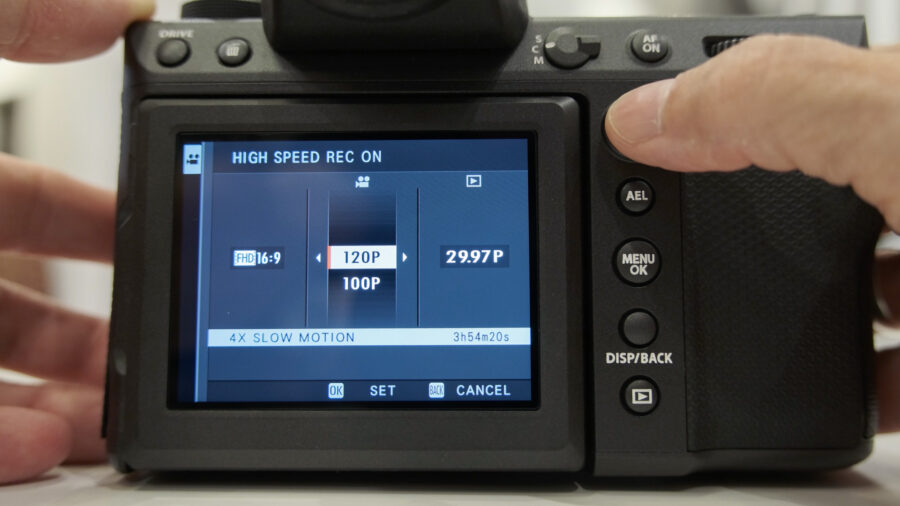
120 frames per second is the highest frame rate and is only available in HD. This is due to a limitation in the sensor’s reading speed.
Image formats galore
Utilizing a large format sensor, the GFX100 II offers the following image formats to accommodate all sorts of lenses using lens adapters: GF, Premista, 35mm, or Anamorphic.
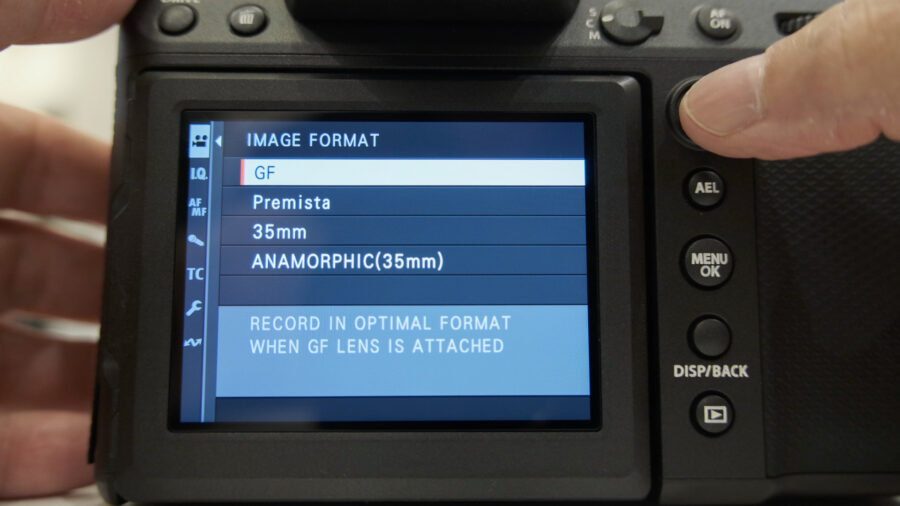
GF image format. Image credit: CineD 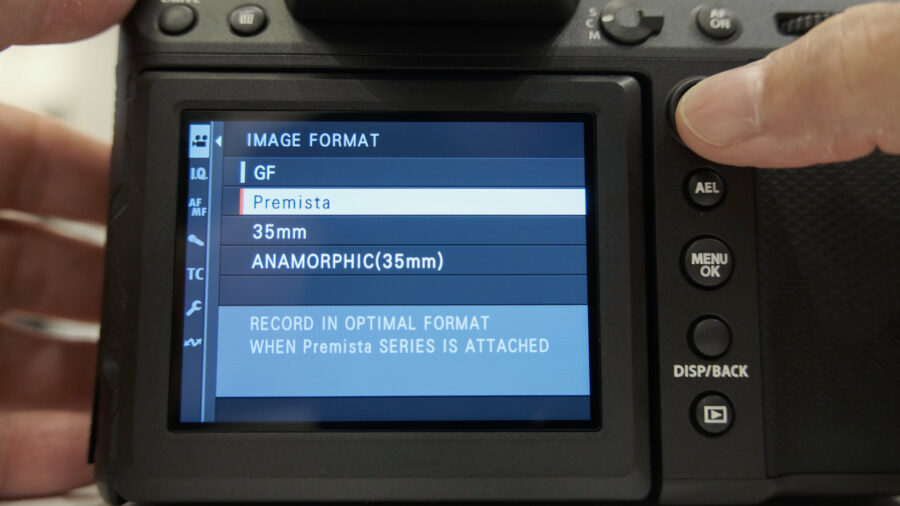
Premista image format. Image credit: CineD 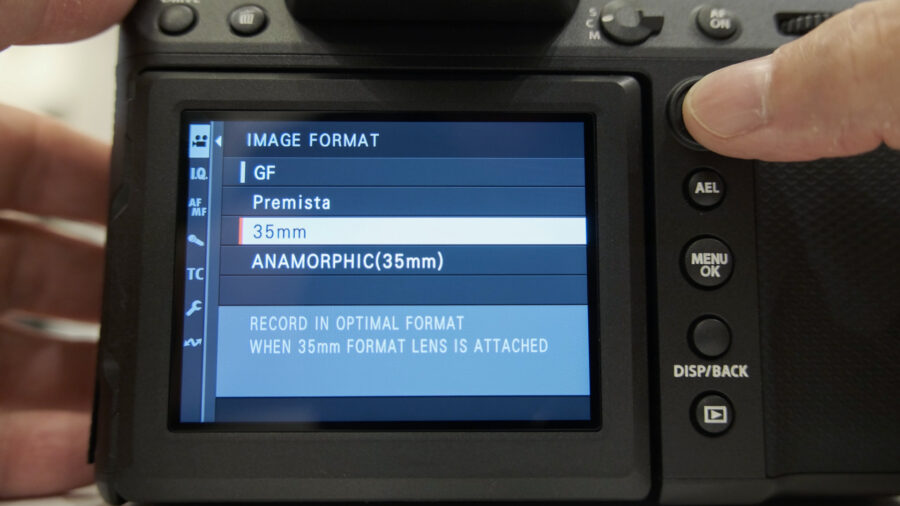
35mm image format. Image credit: CineD 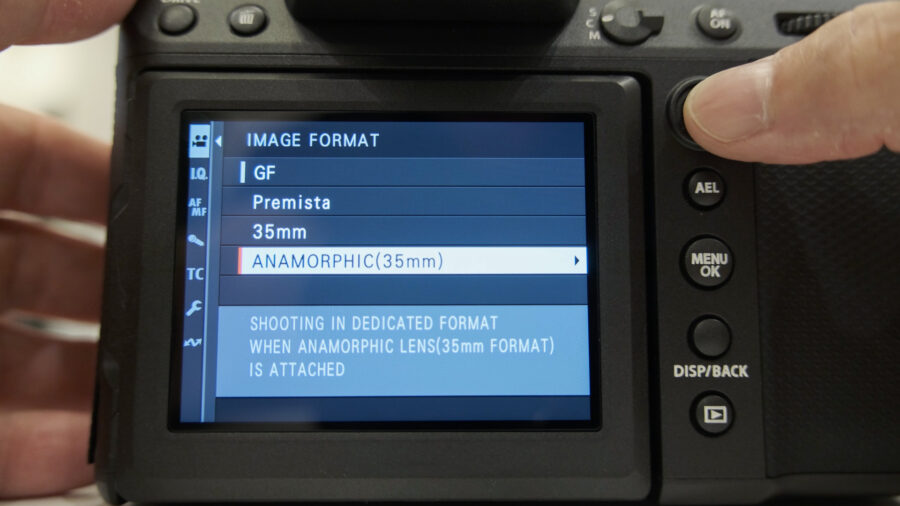
Anamorphic image format. Image credit: CineD
These image formats relate to the available lens adapters for use with non-G-Mount lenses. Depending on the attached lens adapter, the camera will, ideally, choose the correct image format automatically. As a result, the sensor area is different depending on the chosen format.
Use our CineD Lens Coverage Tool to visualize and compare all the recording modes, and check lens coverage with our vast database of cine and photo lenses.
Anamorphic mode
Marking the first FUJIFILM camera that offers anamorphic de-squeeze options in-camera, the GFX100 II allows you to select from the following anamorphic squeezes to match your lens choice: 1.3x, 1.33x, 1.5x, 1.8x, or 2x.
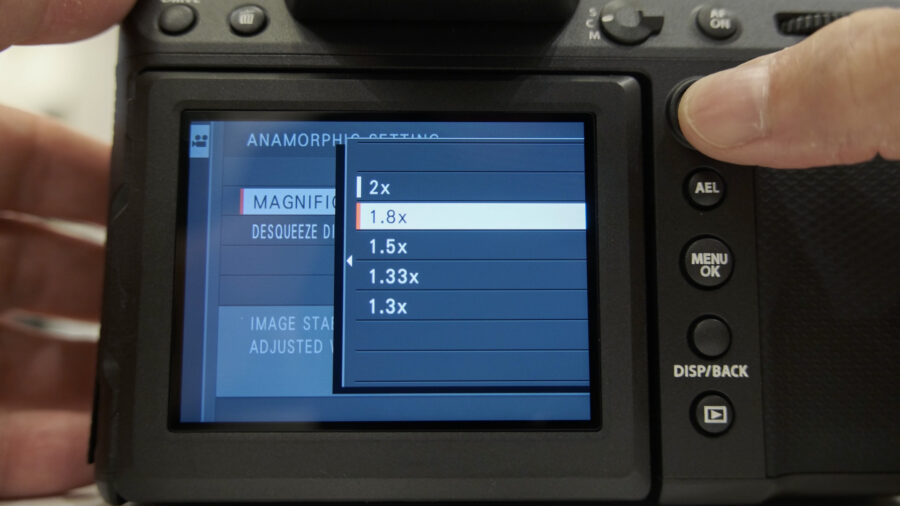
The image will be de-squeezed in-camera so you can view the properly transformed image on the camera screen and EVF, as well as record the de-squeezed footage on the memory card.
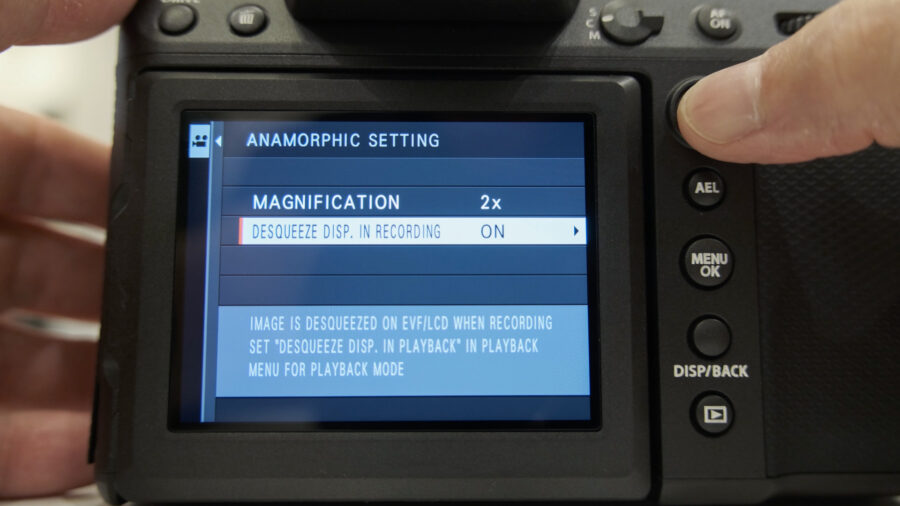
As far as we know, this is the first camera to record a de-squeezed anamorphic image to the memory card, instead of only showing a de-squeezed image on-screen and having to de-squeeze in post-production.
Dynamic range priority
Compared to the X-H2S flagship APS-C camera which has a 14-bit sensor readout to achieve higher dynamic range (see our detailed Lab Test for more details), the GFX100 II features a 12-bit sensor readout only.
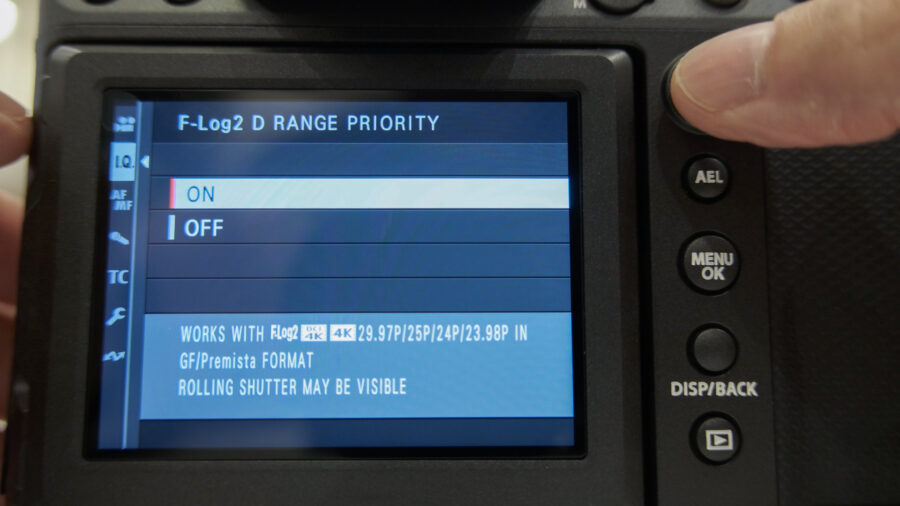
But the GFX100 II has a feature up its sleeve called “F-Log2 D Range Priority” that utilizes proprietary technology to achieve about 1 stop higher dynamic range. This feature is only available in GF and Premista image formats when recording in 4K UHD or DCI in 23.98p, 24p, 25p, and 29.97p. Rolling shutter may be more prominent when using this feature. We will be sure to also test this mode in our upcoming lab test article.
Limitations
In some cases, you will see that certain resolutions are limited to only 24p and not higher. This is the result of reaching the limit of the sensor’s reading speed. Examples of this 24p limit are when recording in DCI 8K and 35mm 3:2.
Screen design choice
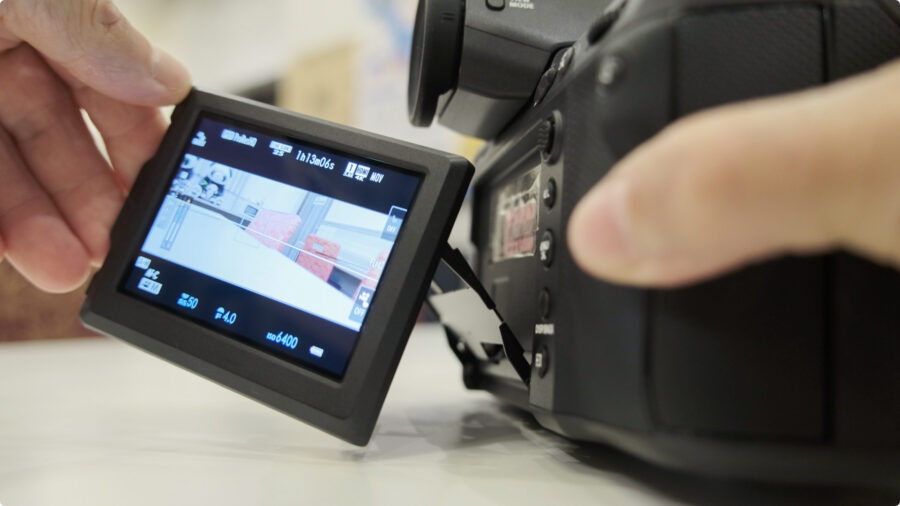
After long brainstorming sessions, FUJIFILM decided on the controversial decision to include a three-way tilt monitor design instead of a fully articulating screen. Yoneda-san justifies this decision with the assumption that more users will use the GFX100 II camera for photography compared to video.
Heat management
This much power inside of a compact camera body will mean a lot of heat produced by the sensor and processor. To help with heat dissipation, FUJIFILM made the GFX100 II compatible with the existing cooling fan accessory that is also compatible with X-cameras like the X-H2S, X-H2, and X-S20.
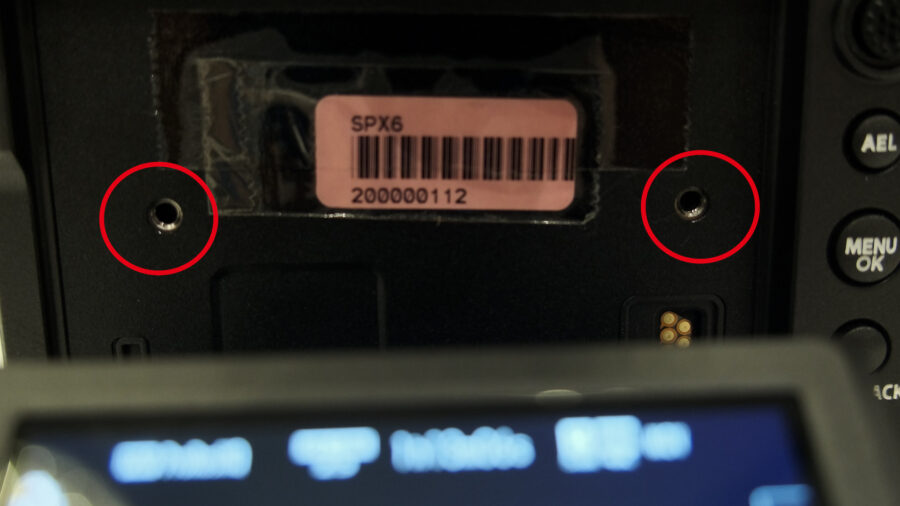
In order to attach the cooling fan accessory, you will have to push out the screen to make space and reveal the mounting threads and contact pins.
Built-in Camera-to-Cloud
Ever since the optional File Transfer Grip was released for the X-H2S and X-H2 to allow Camera-to-Cloud functionality, FUJIFILM users have wondered why this was not a built-in feature of the cameras.
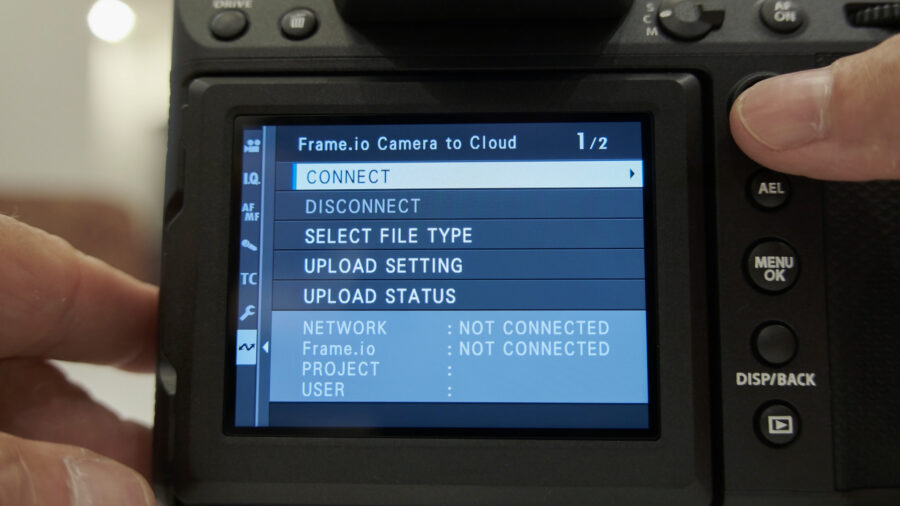
Starting with the GFX100 II, Camera-to-Cloud functionality is built into the body without the need for an optional accessory. The camera body features an ethernet connector, and the camera supports all communication protocols out-of-the-box.
Recording media
Much like the X-H2S and X-H2, the GFX100 II can also record to one CFexpress Type B and one SD card slot. All resolutions and frame rates (even in 720 Mb/s) can be recorded to V90 SD cards in H.265 and H.264, but for ProRes recording you will have to use a CFexpress card.
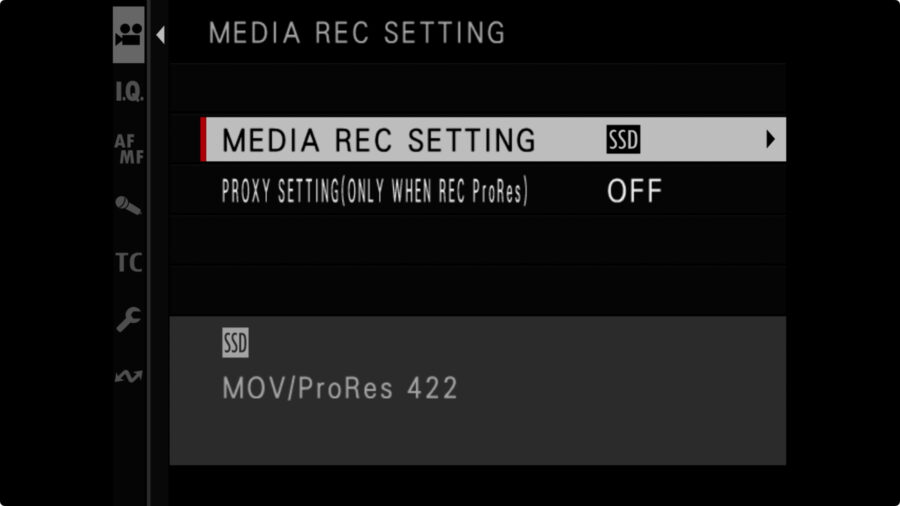
Also a first for FUJIFILM cameras is the ability of the GFX100 II to record directly to external SSD drives.
Price and availability
You can order the FUJIFILM GFX100 II today at the price of $7499.
As always, you can find more information about the GFX100 II on the manufacturer’s website.
You can also check out our Lens Coverage Tool to find out what the difference is between the many recording formats and which lenses cover which format.
Are you a GFX user and have you been waiting for this camera? What excites you most about the GFX100 II? Does this camera tick all the boxes on your camera wishlist? If not, which features would you have loved to see in the GFX100 II? Please share your thoughts in the comments below!
